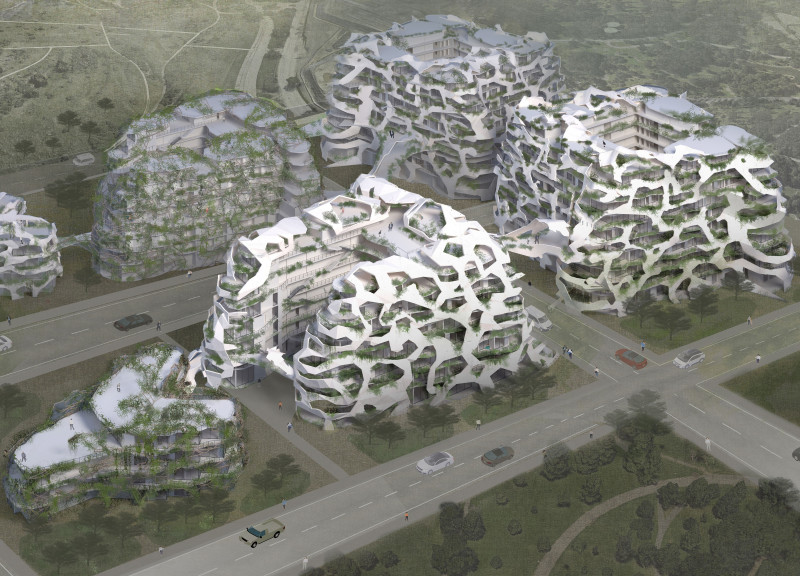5 key facts about this project
The project offers a modular solution to social housing that adapts to various urban contexts. It is set in an area where the need for affordable and functional living spaces is crucial. The design concept revolves around a gallery-type module that can be adjusted in height and arrangement. This flexibility allows for the creation of residential spaces that prioritize both practical use and community interaction.
Modularity and Flexibility
The core feature of the design is its modularity, which permits different configurations of living units, ranging from studios to four-bedroom apartments. This adaptability responds to various occupant needs while enhancing the sense of community through interconnected spaces. The layout encourages social engagement, incorporating shared gallery areas for relaxation and gatherings among residents.
Material Considerations
Two main options exist for the structure’s exterior. The first option uses reinforced concrete, which ensures durability and creates shaded areas that improve comfort for those living there. This material choice supports reliable urban housing, providing lasting strength and stability in residential buildings.
The second option incorporates a wooden mesh with vines, presenting a more natural aesthetic that fosters a connection with the environment. This design element softens urban boundaries and adds warmth, allowing residents to feel closer to nature within an urban setting.
Community Integration
The design features community spaces, including cafes, shops, and recreational areas. These elements aim to create a lively social atmosphere within the housing complex. By focusing on social connections, the design encourages residents to engage with one another, fostering a sense of community and belonging.
A notable detail is the use of cantilevered sections in the layout. This technique reduces the need for additional support pillars, which enhances the flow and usability of both shared and private spaces. The approach reflects an understanding of contemporary needs in social housing, making it practical and accessible for diverse lifestyles.






















































